DAN TRI: BIM GROUP IN AN EFFORT TO IMPROVE THE VALUE OF NINH THUAN SALT
The reportage "BIM Group's efforts to increase the value of Ninh Thuan salt" was conducted by Dan Tri. This report captured impressive images of farmers in the salt fields.
During the 28-year journey, the agricultural sector has always played a core and fundamental role in the BIM Group's ecosystem.
As a multidisciplinary economic group, BIM Group is famous in the field of agriculture and food as one of the largest industrial salt production, aquaculture, and seafood production units in Vietnam. The group's farming area spans thousands of hectares, in localities such as Quang Ninh, Kien Giang, and Ninh Thuan.
After three decades of setting foot in potential but untapped sectors, BIM Group has made breakthrough changes, from the successful localization of Pacific oysters (2008), introduction to market white leg shrimp, and standard farming processes using natural microorganisms to industrial models in a 2,500-hectare salt field in Ninh Thuan... BIM Group's initiatives have contributed to opening a new direction for the local economy, solving the problem of jobs for thousands of farmers.
Successful Vietnameseization of Pacific oysters
Pacific milk oysters are considered the pride of the Van Don sea area, Quang Ninh province, and are also one of the delicious oyster varieties with many nutritional values. Oysters are raised in a natural environment, on clean seas, free of tourism and industry, and far from people's livelihoods.
The oyster breed originated in Japan, domesticated in Taiwan. And it was not until 2006 that businessman Doan Quoc Viet, founder of BIM Group, brought oysters back to Vietnam. His belief at that time was that the soil, climate, temperature, and salinity of the Northeast Sea are similar to where the milk oysters have the best quality, which is also a guarantee that the Pacific oyster variety would be successfully Vietnameseized.
From the original idea of the founder, Ha Long Investment Development and Production Limited Company (BIM Group) put in culture Pacific oysters in the Van Don sea area. BIM's main commercial oyster farming area covers an area of 500ha in Ban Sen commune, Van Don district, Quang Ninh.
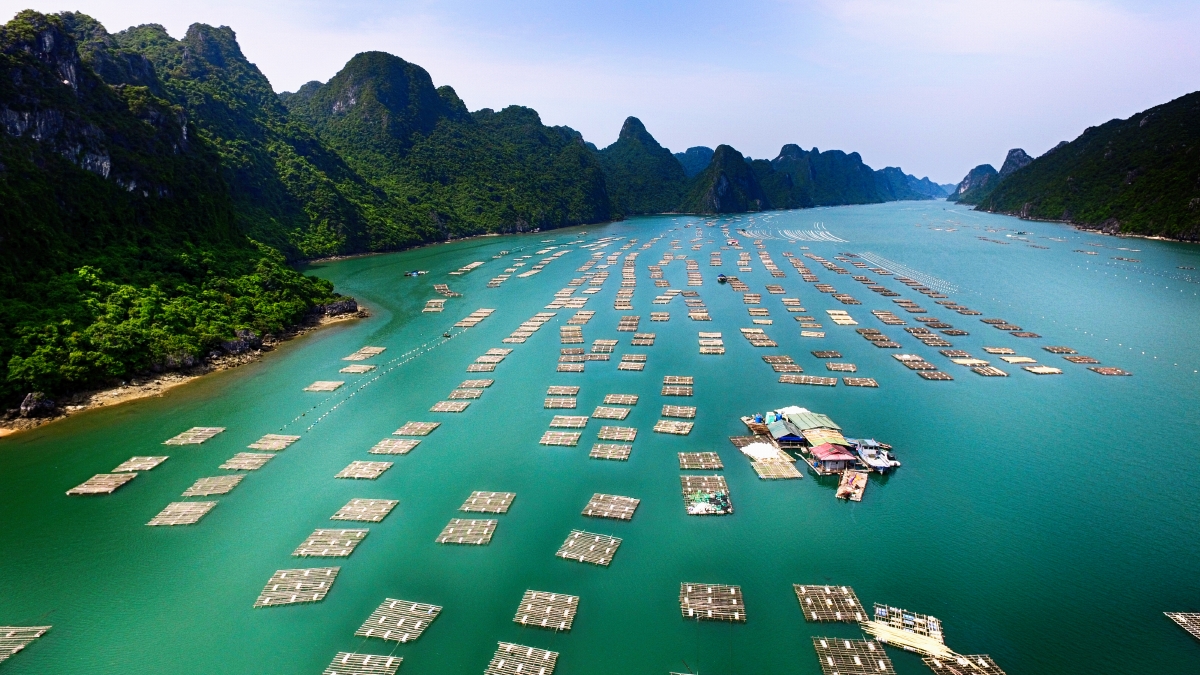
Indigenous Pacific oysters successfully researched and developed by BIM Group have now become the main product of Van Don district, Quang Ninh province. Photo: BIM Group
After 4 years of research from the laboratory to the farm, the oyster is domesticated. The live oysters are healthy, grow fast, have large intestines, are fatty, sweet, and have high nutritional content. In the first harvest, in 2007, the business reached nearly 500 tons of oysters, and the next 5 years averaged 700 tons per year.
Since 2012, the company's fresh shelled oysters, peeled fresh oysters, and grilled oysters with cheese have appeared more, from local seafood markets to supermarkets, supported to participate in promotion programs. commercial... Hausubi, BIM's oyster brand, is chosen by many people in meals, meets the requirements of fastidious partners in export, and is present in almost all retail systems, and super chains in the domestic market.
Deep processing and development of value-added products from oysters such as at Ha Long Production Development Investment and Development Co., Ltd have contributed to opening a new direction, exploiting the advantages of regional economic development. In 2019, Quang Ninh's Pacific oyster farming area reached over 3,000 hectares, with an annual output of nearly 20,000 tons. Thousands of households, especially in the Van Don island district, have changed their lives thanks to oyster farming.
Technology application in shrimp farming
Before successfully localizing the Thai Binh Duong oyster variety in Van Don (Quang Ninh), BIM Group put into operation many large aquaculture and seafood production zones in this province such as the Minh Thanh shrimp farming area (2001). 251ha, the average output is up to 2,000 tons per year.
BIM Food Joint Stock Company in Dong Linh area, Minh Thanh ward is also a pioneer in researching and applying a high-tech shrimp farming model in Quang Yen town.
In 2012, after successfully farming 10 hectares of white leg shrimp, the company gradually expanded the farming area to 70 hectares. The investment capital is over 1 billion VND per hectare to apply advanced technology, including water treatment to enhance biosecurity and disease prevention; a special aeration system to reduce energy costs and optimize oxygen supply; an Automatic feeding system with a negative sensor that helps to provide feed according to shrimp's demand thereby reducing feed consumption index.
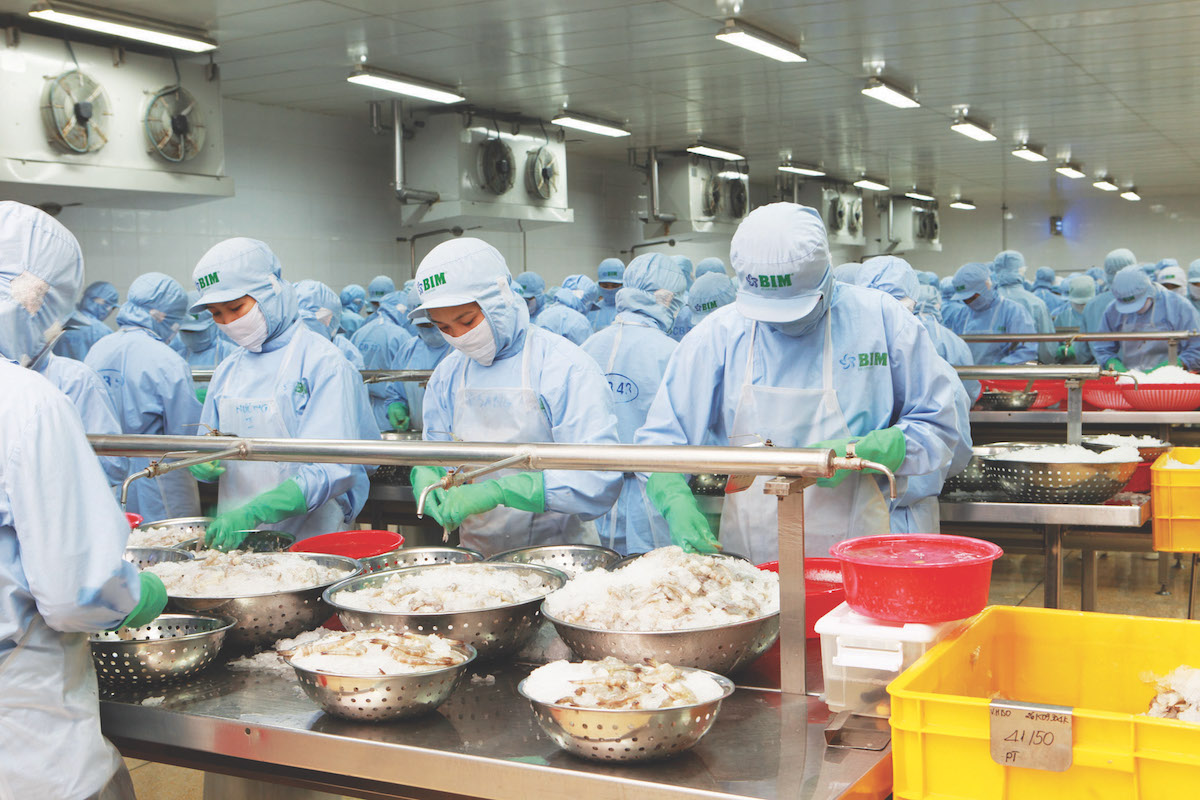
Inside BIM Group's shrimp processing factory. Photo: BIM Group
According to business representatives, high-tech shrimp farming helps farmers and businesses improve the farming process, shorten the farming time, and bring economic efficiency 3 to 4 times higher than traditional shrimp farming. During the farming period, enterprises mainly use microbial products for environmental management. The survival rate of shrimp is up to over 90%. In 2014, BIM has put into mass production.
In Kien Giang, BIM Kien Giang Food Joint Stock Company has changed its high-tech shrimp farming production method, from farming earthen ponds to lining the pond bottoms for shrimp farming. The plan helps to reduce the cost of pond renovation, avoid the accumulation of dirt and pathogens in the pond bottom, prevent diseases from arising, and increase the number of farming crops from 1-2 harvests a year to 3 harvests per year. A new direction helps shrimp farmers improve productivity, opening a movement to apply science and technology in shrimp farming areas.
Many big projects are also invested by BIM Group in Kien Giang such as the Dong Hoa shrimp farming area (2004), Phu Quoc island seed development center (2005), and Tac Cau seafood processing factory (2007); which are the major aquaculture and seafood production areas.
For example, the Phu Quoc island seed development center has a scale of 42ha, specializing in importing and selecting clean seed sources from many countries around the world such as the US, Thailand, Indonesia, and Singapore; rearing and breeding shrimp with a maximum capacity of up to 3 billion shrimp per year. Dong Hoa shrimp farming area with a scale of 1,234ha also promotes exports to many demanding markets such as the US, Europe, and Japan, with a stable yield of about 16 tons per hectare; while Tac Cau seafood processing factory has an output of up to 13,000 tons of finished products per year...
High-tech clean salt production model
Salt production is another important activity of BIM Group, which has brought into play the advantages of the long coastline, the clear blue sea along with soil conditions, sunny and windy climate of Ninh Thuan, Production Joint Stock Company, and Salt Processing BIM has invested in modern technology to produce and process clean salt products.
Since 2006, the company started to produce according to the industrial model in the clean salt field of Quan The - one of the three largest salt fields in Southeast Asia. The enterprise owns the advanced salt production equipment and technology of Serra Group (Spain), a large-scale production facility, and a chain management process to ensure the source of raw materials. Since then, to market natural, safe sea salt products that meet high standards.
Up to now, BIM Group's 2,200 ha salt industrial economic zone has produced over 350,000 tons of salt per year. Including Ca Na and Tri Hai salt fields, the enterprise contributes about 60-70% of Vietnam's salt production.
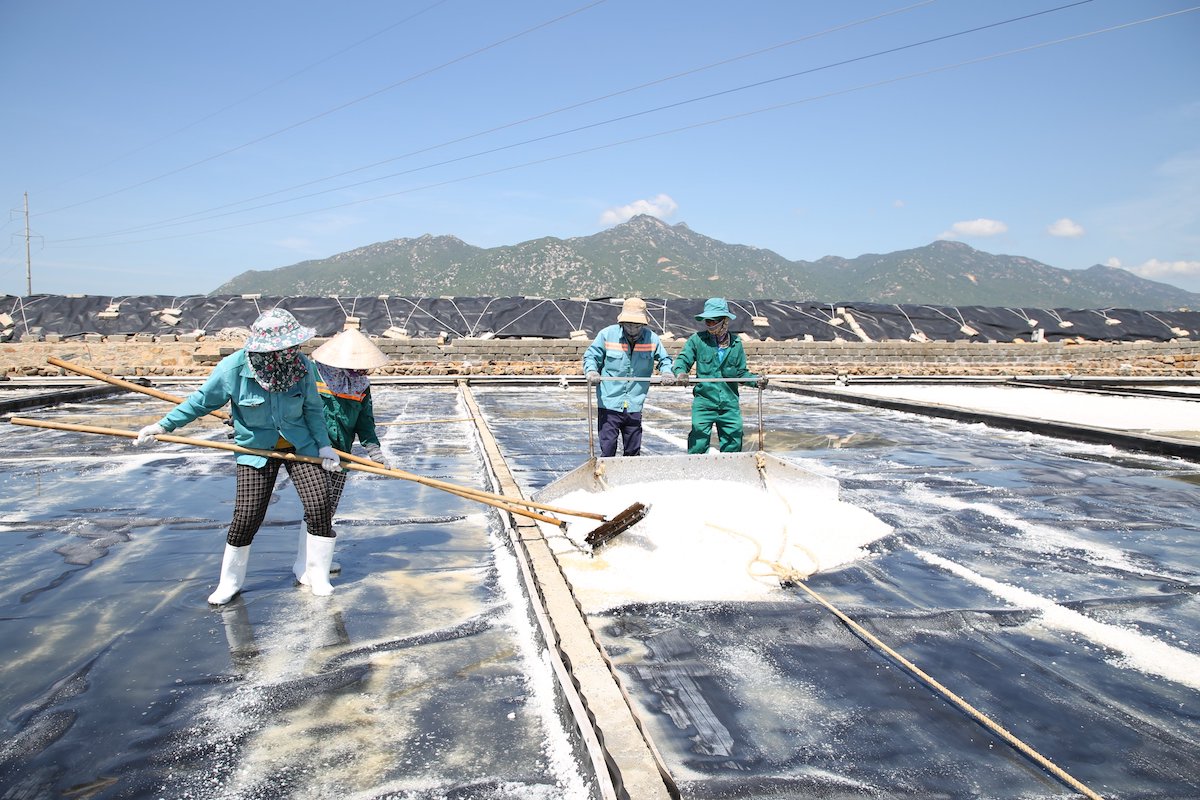
The mechanization and application of technology in the salt fields of BIM Group change the salt mining industry in Ninh Thuan. Photo: BIM Group
Right on the land that is producing industrial salt is the place to deploy solar power projects and especially to build large-capacity wind power poles. BIM Energy has installed photovoltaic panels on salt fields, forming the largest clean-energy salt production complex in Vietnam, limiting the direct impact on the environment.
In early October 2021, BIM Wind Power Plant in Thuan Nam district, Ninh Thuan province went into commercial operation, marking the milestone that BIM Group completed the strategy of developing clean salt and clean energy on an area of 2,500 ha with a total investment of 12,000 billion VND.
Currently, BIM Salt Production and Processing Joint Stock Company provide jobs for hundreds of local workers, opening a new direction in economic development for the whole province. The poverty rate in Ninh Thuan has decreased from 23,767 households (in 2016) to 8,280 households in 2021.
According to the representative of BIM Group, over the past 28 years, BIM Foods has always been in parallel with the general development of the agri-food industry in Vietnam. The enterprise affirms a methodical business method, investment in advanced technology, and a chain management process with quintessential raw materials to provide high-quality and safe products that meet market standards.
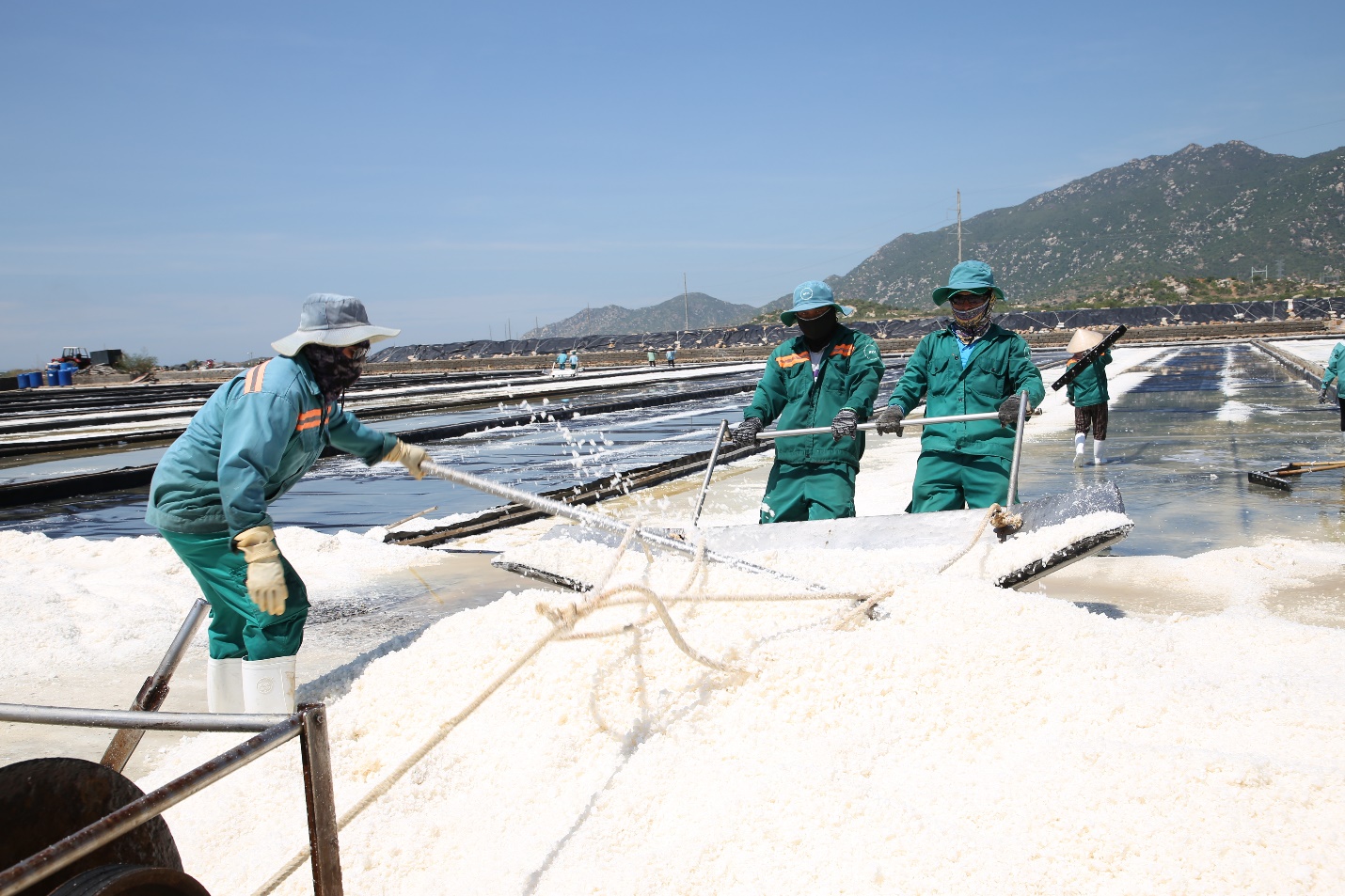
The reportage "BIM Group's efforts to increase the value of Ninh Thuan salt" was conducted by Dan Tri. This report captured impressive images of farmers in the salt fields.
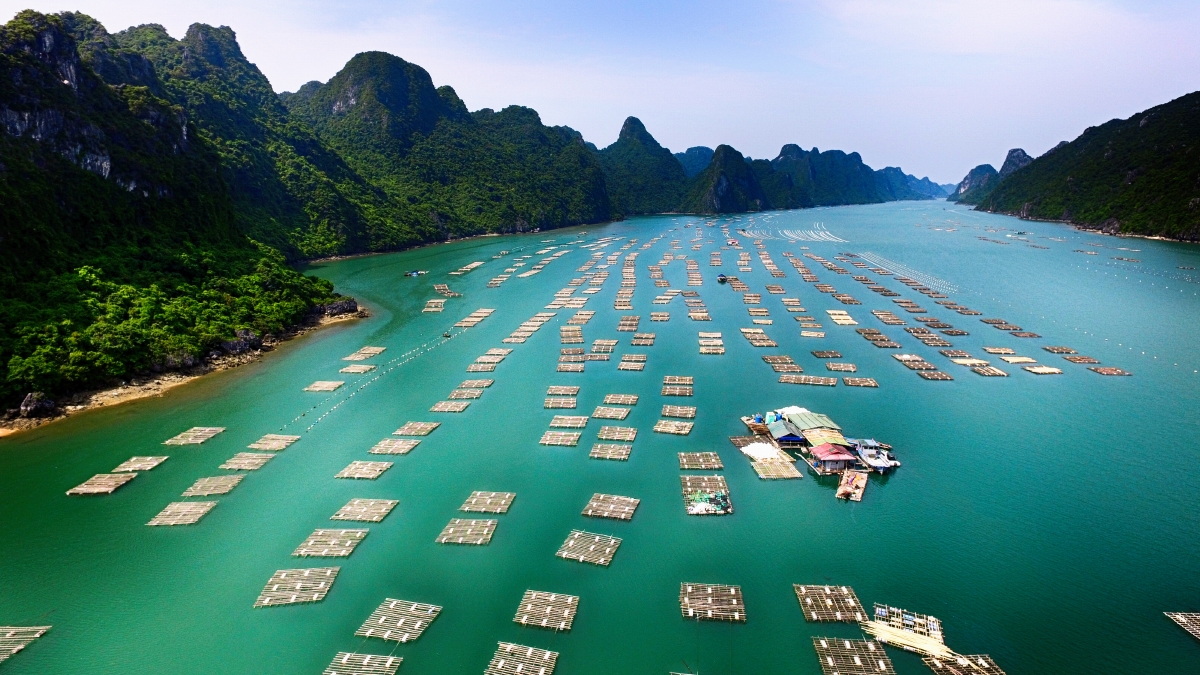
During the 28-year journey, the agricultural sector has always played a core and fundamental role in the BIM Group's ecosystem.

On April 16, 2022, Prime Minister Pham Minh Chinh and his delegation attended the 30th anniversary of the re-establishment of Ninh Thuan province (April 1, 1992 - April 1, 2022). The Prime Minister visited and directed several large projects and works in the province, including the clean salt of BIM...